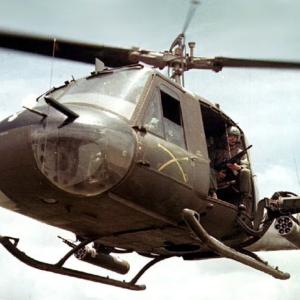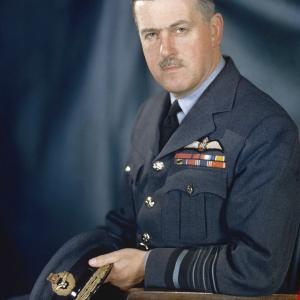
On this day in military history…
On November 14, 1965, the United States entered a new and brutal phase of the Vietnam War with the first major engagement between American ground forces and the North Vietnamese Army in the Ia Drang Valley. Situated in the Central Highlands near the Cambodian border, the valley became the scene of one of the fiercest and most significant battles of the war, testing American tactics, weaponry, and resolve in a new kind of warfare.
The American forces involved were primarily from the 1st Battalion, 7th Cavalry Regiment, part of the 1st Cavalry Division (Airmobile), under the command of Lieutenant Colonel Harold G. Moore. Although popularly remembered as a Marine engagement, the men who fought at Ia Drang were U.S. Army air cavalry troops—the first to use large-scale helicopter assaults to deliver soldiers rapidly into combat zones. Moore’s unit landed by UH-1 Huey helicopters at Landing Zone X-Ray, deep inside enemy-held territory. Around 450 men were inserted into a clearing surrounded by thick jungle, not realizing that they were landing virtually on top of an entire regiment of the North Vietnamese Army’s 66th Regiment, estimated at over 2,000 troops.
The North Vietnamese forces, commanded locally by Lieutenant Colonel Nguyen Huu An, were well trained and determined. Their mission was to draw the Americans into close combat where U.S. airpower and artillery would be less effective. Almost immediately after the initial landings, the Americans came under intense fire from automatic weapons and mortars. Within minutes, Moore’s men were surrounded on three sides, and the situation quickly turned desperate. Radio communications were critical, as artillery and airstrikes were called in dangerously close to U.S. positions to hold off waves of enemy assaults.
For three days, from November 14 to 16, the fighting raged around Landing Zone X-Ray. The Huey helicopters made constant trips to bring ammunition, evacuate the wounded, and deliver reinforcements under fire. American artillery batteries several miles away provided devastating support, while jet aircraft and B-52 bombers struck enemy positions around the valley. The infantrymen fought tenaciously, often in hand-to-hand combat, as the North Vietnamese attempted to overrun the perimeter again and again.
Eventually, Moore’s battalion was relieved by the 2nd Battalion, 7th Cavalry, and other supporting units. The battle then shifted westward to another area known as Landing Zone Albany, where a U.S. column was ambushed during a movement through the jungle. That fight turned into an even bloodier encounter, as North Vietnamese troops used stealth, surprise, and superior knowledge of the terrain to inflict heavy casualties.
By the end of the Ia Drang campaign, the U.S. had suffered 234 killed and more than 240 wounded. The North Vietnamese losses were estimated at over 1,000 dead, though the exact number remains uncertain. The Americans’ superior firepower—artillery, helicopter gunships, and tactical air support—proved decisive in preventing a total disaster. Yet, the battle revealed both the strengths and weaknesses of U.S. strategy.
The Ia Drang Valley demonstrated the effectiveness of rapid air mobility and the ability of helicopters to insert and sustain troops in remote areas. It also exposed the vulnerability of such forces when isolated and surrounded in hostile terrain. For the North Vietnamese, the battle proved that their troops could stand up to the Americans despite massive U.S. firepower, and that close-quarters fighting could neutralize much of that technological advantage.
The lessons learned at Ia Drang shaped much of the war that followed. The U.S. military refined its use of helicopters and improved coordination between ground and air units. The North Vietnamese, on the other hand, adopted tactics emphasizing ambushes, close combat, and the avoidance of large-scale conventional engagements where American airpower could dominate.
The Battle of Ia Drang marked the beginning of full-scale American involvement in Vietnam. It was a brutal initiation that foreshadowed the long, grinding conflict to come—a war in which technology and courage were not always enough to guarantee victory in the jungles of Southeast Asia.










